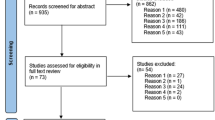Abstract
This paper describes (1) the design, methods and baseline data of the first smoking cessation clinical trial for Chinese Americans with medical conditions - Chinese Community Smoking Cessation Project (CCSCP); (2) the collaborative process between researchers and the Chinese community; and (3) the barriers and facilitators of implementing the study. CCSCP was a culturally tailored, randomized, smoking cessation trial testing the efficacy of an intensive (physician advice, in-person counseling with nicotine replacement therapy, 5 telephone calls) compared to a minimal (physician advice and self-help manual) intervention. The study applied a community-sensitive research method involving community members in all phases of the research process in San Francisco Bay Area during 2001–2007. CCSCP recruited 464 smokers from health care facilities (79%) located in Chinese neighborhoods and through Chinese language media (21%). Baseline assessments and interventions were conducted in-person using translated and tested questionnaire and intervention materials. The majority of the participants were men (91%) with a mean age of 58.3 years, foreign born (98%), with less than high school education (58%), spoke no English (42%) and in non-skilled or semi-skilled occupations (60%) with <$20,000 household income (51%). Participants smoked regularly on an average 38.6 ± 17 years, smoked 9.1 ± 8 cigarettes per day and 85% smoked daily. Cultural tailoring of recruitment methods and intervention design led to successful enrollment and retention of participants, overcoming barriers faced by the participants. Community sensitive collaborative process facilitated implementation of study protocol in community health care settings.


Similar content being viewed by others
References
Carr, K., Beers, M., Kassebaum, T., & Chen, M. S. (2005). California Chinese American tobacco use survey-2004. Sacramento, CA: California Department of Health Services.
Gilpin, E. A., White, M. M., White, V. M., et al. (2004). Tobacco control successes in California: A focus on young people, results from the California tobacco surveys, 1990–2002. La Jolla, CA: University of California, San Diego.
Zhu, S. H., Anderson, C. M., Tedeschi, G. J., et al. (2002). Evidence of real-world effectiveness of a telephone quitline from smokers. New England Journal of Medicine, 347, 1087–1093.
Rigotti, N. A., Arnsten, J. H., McKool, K. M., Wood-Reid, K. M., Pasternak, R. C., & Singer, D. E. (1997). Efficacy of a smoking cessation program for hospital patients. Archives of Internal Medicine, 157, 2653–2660.
Stevens, V. J., Glasgow, R. E., Hollis, J. F., Edward Lichtenstein, E., & Vogt, T. M. (1993). A smoking cessation intervention for hospital patients. Medical Care, 31, 65–72.
US Department of Health and Human Services. (1990). The Health Benefits of Smoking Cessation. A report of the surgeon general. Rockville, Maryland: Public Health Service, Center for Disease Control Office on Smoking and Health (DHHS Publication No. 90–8416).
Taylor, C. B., Miller, N. H., Killen, J. D., & DeBusk, R. F. (1990). Smoking cessation after acute myocardial infarction: Effects of a nurse-managed intervention. Annals of Internal Medicine, 113, 118–123.
Miller, N. H., Smith, P. M., DeBusk, R. F., Sobel, S., & Taylor, C. B. (1997). Smoking cessation in hospitalized patients. Archives of Internal Medicine, 157, 409–415.
Bandura, A. (1977). Social learning theory. Englewood Cliffs NJ: Prentice-Hall.
Bandura, A. (1986). Social foundation of thought and action: A social cognitive theory. Englewood Cliffs NJ: Prentice-Hall.
Kottke, T. E., Battista, R. N., DeFriese, G. D., & Brekke, M. L. (1988). Attributes of successful smoking cessation interventions in medical practice: Meta-Analyses of 39 controlled trials. Journal of the American Medical Association, 259, 2882–2889.
Fiore, M. C., Bailey, W. C., Cohen, S. J., et al. (2000). Treating tobacco use and dependence. Clinical practice guideline. Rockville, Maryland: Agency for Health Service, U.S Dept of Health and Human Services.
Israel, B., Schulz, A., Parker, E., & Becker, A. (1998). Review of community-based research: Assessing partnership approaches to improve public health. Annual Review of Public Health, 19, 173–202.
Levine, D., Becker, D., Bone, L., Stillman, F., Tuggle, M., Prentice, M., et al. (1992). A partnership with minority populations: A community model of effectiveness research. Ethnicity and Disease, 3, 296–305.
Macaulay, A., Commanda, L., Freeman, W., Gibson, N., McCabe, M., Robbins, C., et al. (1999). Participatory research maximizes community and lay involvement. North American primary care research group. British Medical Journal, 319, 774–778.
Chinese Community Smoke-Free Project. (1992). Victory over smoking: A guide to smoking cessation for you and your family. San Francisco: Chinese Community Smoking Free Project.
U.S. Department of Health and Human Services. (2000). Healthy people 2010 (2nd ed.). Washington DC: US Government Printing Office.
Acknowledgments
This work was supported by NIH-National Heart, Lung and Blood Institute’s project, R01 HL69363 to Principal Investigator, Candice C. Wong, MD, Ph.D. We thank the following persons and institutions for their assistance on the Chinese Community Smoking Cessation Project: Chinese Hospital (San Francisco, California) with Meggy Chung, Angela Sun, and Elena Tinloy, PharmD; Chinese Community Health and Chinese Community Health Care Association (San Francisco, California) with Edward Chow, MD; Chinatown Public Health Center (San Francisco, California) with Lei-Chun Fung and Alexander Li, MD; Sunset Health Services with Jian Zheng, NP; Kaiser Permanente Medical Groups (San Francisco and Oakland, California) Lilian Chan, NP, Eugene Lau, MD, Ph.D., and Pansy Wong, MD; Raymond Hong and Diana Lau, RN for data management and project coordinator; and Kelvin Quan JD, MPH for editorial support.
Author information
Authors and Affiliations
Corresponding author
Rights and permissions
About this article
Cite this article
Wong, C.C., Tsoh, J.Y., Tong, E.K. et al. The Chinese Community Smoking Cessation Project: A Community Sensitive Intervention Trial. J Community Health 33, 363–373 (2008). https://doi.org/10.1007/s10900-008-9114-8
Published:
Issue Date:
DOI: https://doi.org/10.1007/s10900-008-9114-8



